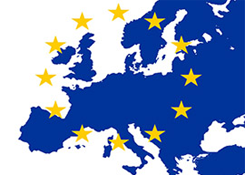UNIFE & ROMANIAN RAIL INDUSTRY ASSOCIATION URGE INVESTMENT OF EU STRUCTURAL FUNDS IN RAIL
On the occasion of the Club Feroviar & AIF “Railway Days Wider Black Sea Area Railway Investment Summit” in Bucharest held on 7-8 October, UNIFE, in support of its Associated Member, the Romanian Railway Industry Association, AIF, (Asociatia Industriei Feroviare din Romania), would like to bring attention to the challenging situation and outlook of the Romanian Rail system with regard to the draft General Transport Master Plan outlined by the current Romanian Government which proposes a drastic reduction in the existing railway lines in the country.
Moreover, UNIFE, with its Romanian members, expresses the necessity for Romania to properly absorb and invest European structural funds available through the Connecting Europe Facility (CEF), TEN-T, and EU cohesion policy in the lagging rail infrastructure.
The proceedings of the Railway Days conference highlighted the importance of the rail system as a driver of mobility and economic development as expressed in the 2011 European Commission White Paper on Transport. UNIFE, in support of AIF, stresses the need for the Romanian Government to allocate a good share of the 2015 Romanian General Budget to transport and earmark a fair percentage of this to the development of the rail system. Furthermore, UNIFE encourages the Romanian Government to make a concerted effort to prepare proposals for rail infrastructure investments for the recently announced CEF call for proposals in time for the deadline for submission of projects in February 2015, as presented at the conference by Mathieu Grosch, Coordinator for the Orient/East-Med Corridor at the European Commission.
Philippe Citroën, Director General of UNIFE, asserted: “The financing offered by the EU for transport infrastructure in Romania is quite attractive and significant. If properly invested it has the potential to enhance and develop the Romanian rail system and contribute to the important TEN-T Orient/East-Med corridor, which would bring increased mobility and commerce to Romania and its neighbouring Member States. UNIFE calls on DG-MOVE, DG-REGIO, and the Romanian Government to prioritise investment of these available funds into rail transport and address the challenges faced in absorbing funds. UNIFE looks forward to collaboration with the Romanian rail sector and the Commissioner-designate for Regional Policy Corina Cretu and Commissioner-designate for Transport and Space Maroš Šefcovic on the development of the railway system in Romania.”
Claudiu Seicean, Secretary General of AIF, contributed, “Most EU Member States are making efforts to enhance and develop their rail infrastructure by investing in the improvement of existing networks. Unfortunately, this has not been the case in Romania over the past 20 years. As such, we once again express our major concern with regard to the draft General Transport Master Plan outlined by the current Romanian Government which proposes a drastic reduction of the existing railway network. From our association – AIF’s – point of view, a master transportation Plan for Romania must be a document that proposes solutions for the improvement of existing lines and the development of a transport strategy on the medium and long term and not on the closure of important railway lines. As usual the Romanian Railway Industry Association, in cooperation with other partners, will make constructive proposals for the improvement of the current draft of the master plan with a more coherent, strategic, and medium-long term approach with a clear list of priorities.”
Stefan Roseanu, Market Research Analyst at Club Feroviar stated: “For two days, Bucharest hosted high-level stakeholders from the European and international railway market alongside preeminent European transport officials. The key conclusion of the summit is that railways are the most important factor in supporting sustainable development and achieving the goals of the EU’s transport strategy. As the Romanian Government prepares the future General Transport Master Plan, they must consider that the rail system is 35 times more environmentally friendly than road transport. Moreover, railways actively raise the technological capacities of other industries ranging from steel and concrete to high technology and communications systems."
